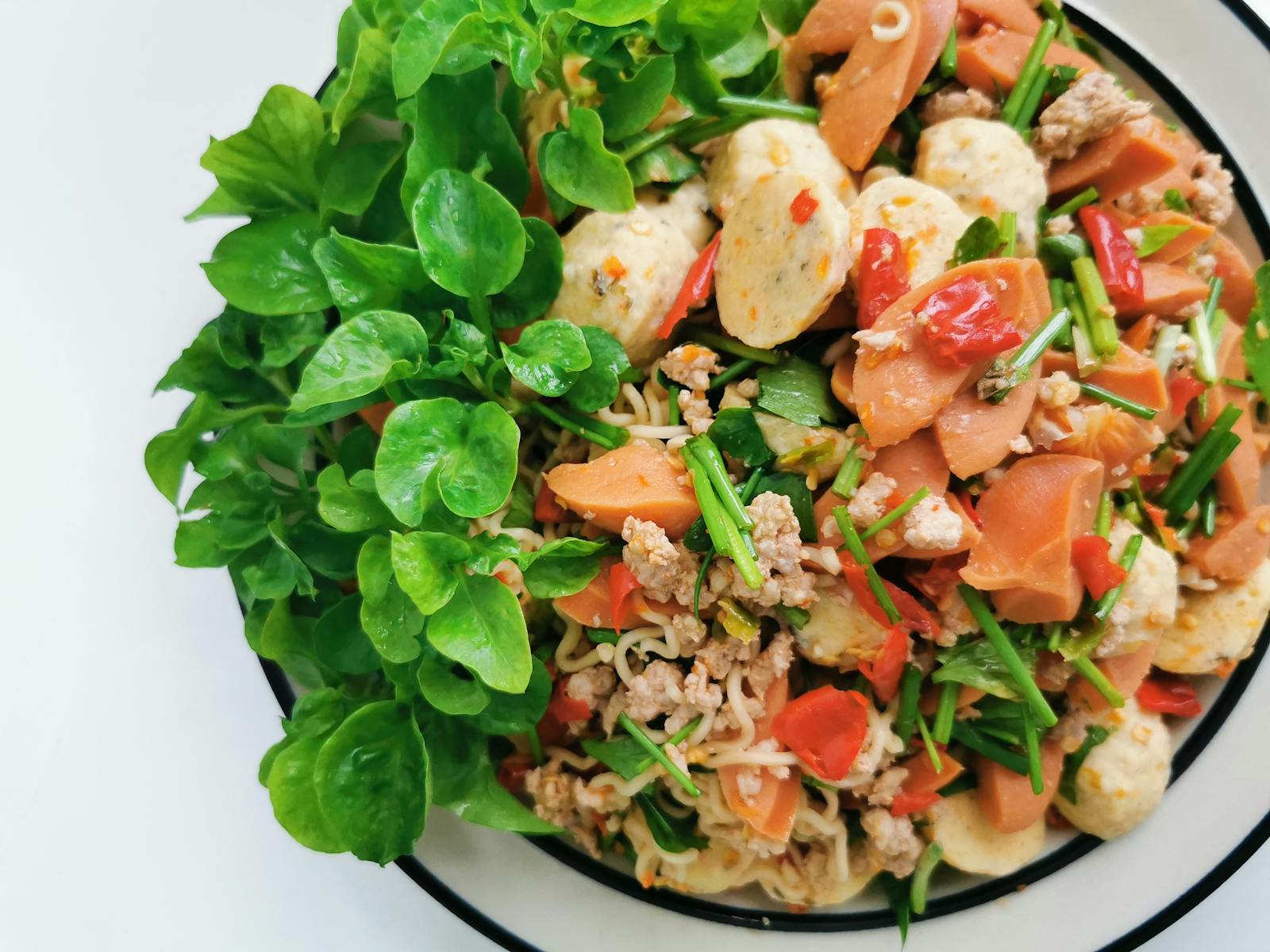
Tiny Tots Tomato Basil Rice Delight: A Flavorful Journey for Little Palates
Introduce your little ones to a culinary adventure with our Tiny Tots Tomato Basil Rice Delight, a dish crafted to tantalize young taste buds and provide a wholesome and delicious meal. Dive into a world of delightful flavors with our Tiny Tots Tomato Basil Rice! Crafted with love and care, this wholesome dish is designed to captivate the taste buds of your little ones while providing essential nutrients for their growing bodies.
Upgrade your meal with this Tomato Basil Rice! Tastes like tomato basil pasta – in rice form. Copycat of a popular convenience pack seasoned rice, this is a terrific recipe base that can be adapted with your herbs of choice!
Key Features Of Tomato Basil Rice:
- Vibrant Tomato Goodness:
- Bursting with the goodness of ripe tomatoes, this dish brings a burst of color and a sweet, tangy flavor that kids love.
- Mild Basil Infusion:
- A hint of basil adds a subtle herbal note, enhancing the overall taste and introducing young palates to the world of fresh herbs.
- Nutrient-Rich Brown Rice:
- We prioritize health with the inclusion of nutrient-rich brown rice, providing essential vitamins, minerals, and fiber for growing bodies.
- Kid-Friendly Portions:
- Perfectly portioned for tiny tots, ensuring they get a satisfying meal without overwhelming their little appetites.
- No Artificial Additives:
- Crafted with care, our Tiny Tots Tomato Basil Rice Delight is free from artificial additives, colors, and preservatives, ensuring a pure and wholesome dining experience.
- Easy to Chew and Digest:
- The rice is cooked to perfection, offering a soft and easy-to-chew texture that is gentle on young teeth and tummies.
- Versatile Meal:
- Ideal as a standalone meal or paired with other kid-friendly sides, making it a versatile option for lunch or dinner.
Why Kids Love Tiny Tots Tomato Basil Rice Delight:
- Exciting Colors and Textures:
- The vibrant colors of tomatoes and the appealing texture of rice create an exciting visual experience for kids.
- Sweet and Tangy Flavors:
- The natural sweetness of tomatoes combined with a hint of tanginess makes for a flavor profile that kids find both familiar and delightful.
- Mild Herb Introduction:
- The subtle presence of basil introduces young taste buds to mild herbal notes, expanding their palate with gentle flavors.
- Familiarity with Brown Rice:
- Encourages a positive relationship with whole grains by introducing nutrient-rich brown rice in a form that is easy for kids to enjoy.
- Fun and Enjoyable Mealtime:
- The kid-friendly portions and delicious flavors make mealtime an enjoyable experience, fostering positive associations with healthy eating.
- Wholesome Nutrition:
- Parents can feel good about serving a dish that not only delights taste buds but also provides essential nutrients for their child’s growth and development.
- No Fuss, No Stress:
- Designed to be hassle-free for parents and caregivers, this dish offers a convenient and nutritious option for busy mealtimes.
How to make tomato basil rice
Ingredients
- Rice: Use a long-grain white rice for this recipe; Basmati or Jasmine will both work well. You can make this recipe with brown or wild rice too, but the cooking times will vary.
- Butter: Use salted butter, or use unsalted and add a pinch of salt. The butter adds a richness and silky texture.
- Tomato paste: For a rich tomatoey flavor.
- Minced garlic, fresh basil, and black pepper
Be sure to scroll down for the full recipe!
- Cook and drain the rice
- Mix the ingredients for the tomato sauce
- Add in the rice and fresh basil to the pot and stir to combine
Instructions:
- At first, Heat oil in a large saucepan over medium heat. Add garlic and onion, cook until translucent, 2 – 3 minutes. Add basil and cook for 20 seconds – don’t let it burn.
- Add remaining ingredients except basil. Mix until tomato paste is dissolved.
- Crush basil sprig in hand, drop on surface then push in (leave on surface, don’t stir).
- Cover and bring to simmer, then immediately turn down heat to medium low (or low if stove is strong) and cook for 15 minutes or until liquid is fully absorbed – tilt saucepan to check.
- Remove from heat and set aside, covered, for 10 minutes.
- Remove basil sprig. Fluff with fork, taste for salt. Then leave to stand for another 5 minutes, uncovered. Stir through fresh basil. Serve immediately.
Recipe Notes:
1. Rice – Long grain white rice yields the fluffiest result for this recipe. Other way long-grain rices – basmati and Jasmin – will also easily work fine but the rice will have a subtle aroma of the respective rices and both well very well with this recipe, especially basmati!
Medium grain white rice is the next best, followed by short grain rice. For brown rice, cook on low for around 40 minutes. This recipe is not suited to paella, risotto or minute rice.
2. GENERAL RECIPE NOTES:
- A small amount of tomato paste yields the fluffiest rice (compared to canned tomato, passata, puree etc)
- Sugar takes the edge off tomato paste which is a bit sour
- Basil goes black when heated. So the purpose of cooling the rice before adding fresh basil is to reduce this problem and get max basil flavour.
- Use this recipe as a base for any herb you want. Just switch out the dried and fresh basil. Be mindful of herb strength – eg rosemary is very strong.
3. STORAGE – Keeps great in the fridge but benefits greatly from the addition of some fresh basil.
4. Nutrition per serving.
Recipe Variations
This tomato-basil rice is pretty delicious as it is, but you can easily make a few changes to suit your tastes. This delicious side dish is healthy, gluten free, low fat, sugar-free and clean eating friendly. A great meal prep recipe and lunch or dinner addition. Examples-
- Make it dairy-free or vegan. Simply skip the butter or use a plant-based one.
- Mix up the herbs. Tomato and basil are great together, but you can use other fresh herbs like rosemary, parsley, or cilantro depending on what you plan to serve it with. If you are making a Mexican main course, cilantro would be a great swap!
- Add in some vegetables. Saute up some onion, bell pepper, or mushrooms to mix in.
- Make it a fuller meal. Stir in some shredded chicken or shrimp to make this a filling dinner.
Why you will love this tomato basil rice recipe!
- Simplicity Meets Flavor:
- This recipe strikes the perfect balance between simplicity and rich flavor. With just a handful of ingredients, it delivers a taste that is both comforting and gourmet.
- Freshness in Every Spoonful:
- Ripe tomatoes and fragrant basil bring a burst of freshness to every spoonful. The natural flavors of these ingredients shine, making each bite a celebration of garden-fresh goodness.
- Wholesome and Nutrient-Rich:
- Incorporating nutrient-rich brown rice ensures that this dish is not only delicious but also packed with essential vitamins, minerals, and fiber. It’s a wholesome choice for those mindful of their nutrition.
- Balanced Sweet and Tangy Notes:
- The natural sweetness of tomatoes complements the slight tanginess, creating a harmonious balance of flavors. It’s a dance of tastes that delights the palate.
- Mild Basil Infusion:
- The gentle infusion of basil adds a mild herbal note, elevating the dish without overpowering the primary flavors. It’s a nuanced touch that adds sophistication to the recipe.
- Versatile and Adaptable:
- Whether served as a standalone dish or paired with proteins, vegetables, or salads, this tomato basil rice recipe is versatile. It seamlessly integrates into various meal plans, making it a go-to option for different occasions.
- Kid-Friendly Appeal:
- The vibrant colors and familiar flavors make this dish appealing to kids. It’s an excellent way to introduce young palates to the world of fresh herbs and wholesome grains.
- Comfort in Every Bite:
- There’s a comforting and homey feel to this recipe. It’s the kind of dish that evokes feelings of warmth and contentment, making it a staple for both weeknight dinners and special occasions.
- Quick and Easy Preparation:
- Busy schedules need meals that are quick to prepare without compromising on taste. This recipe fits the bill, offering a delicious outcome without the need for extensive time in the kitchen.
- No Artificial Additives:
- Crafted with care, this tomato basil rice recipe is free from artificial additives, colors, and preservatives. It’s a natural and wholesome option for those who prioritize clean eating.
- Elevates Everyday Meals:
- Transform your everyday meals into extraordinary culinary experiences. This recipe takes a staple like rice and turns it into a standout dish that elevates your dining experience.
- Adapts to Dietary Preferences:
- Whether you’re a vegetarian, looking for a side dish, or planning a complete meal, this recipe easily adapts to various dietary preferences, making it a crowd-pleaser.
Health Benefits of Basil:
Basil is an herb in the mint family. It adds flavor to meals, and its nutrients may provide health benefits, such as reducing oxidative stress and supporting cardiovascular health. Sweet basil plays a role in many Mediterranean, and particularly Italian, cuisines. It forms the basis of pesto and adds a distinctive flavor to salads, pasta, pizza, and other dishes. Indonesian, Thai, and Vietnamese cuisines also feature this herb.
In the diet, sweet basil will provide vitamins, minerals, and a range of antioxidants. It is an essential oil may also have medicinal benefits. Sweet basil is available in many grocery stores, while other varieties have different tastes and fragrances. Another type of basil is tulsi, or holy basil. It os the ost helpful for health. This plant plays a therapeutic role in Tamil and Ayurvedic medicines, which are predominantly practiced in Southeast Asia. This is different from sweet basil.
1. Use of basil leaves for diabetes
Basil leaves may have anti-diabetic properties. A study suggested that basil leaves may lower blood glucose levels and urine glucose levels. Basil may also reduce the risk of complications due to diabetes like retinopathy and cataract. However, large-scale clinical trials are required to check the effect of basil leaves on diabetes. You must consult your doctor in case of high blood sugar levels. Don not self-medicate.
2 .Reducing oxidative stress
Antioxidants are essential for eliminating free radicals from the body. Free radicals are unstable molecules that develop as a result of metabolism and other natural processes. They can also form as a result of smoking and some dietary choices.
Antioxidants are compounds that help remove these molecules from the body. If they build up instead, oxidative stress can occur, resulting in cell damage and, possibly, disease.
ScientistsTrusted Source have linked cancer, heart disease, rheumatoid arthritis, diabetes, and other health issues to oxidative stress. The body produces some antioxidants, but it also needs to absorb some from the diet. Among the many antioxidants in basil are anthocyanins Trusted Source and beta carotene.
3.use of basil leaves for bacterial infections
Basil leaves may contain several aromatic essential oils. Some aromatic compounds are linalool, eugenol, citral, and limonene. These compounds may act against bacterial infections by damaging bacterial cell walls and leading to the death of bacteria. Some aromatic compounds hinder the growth of certain bacteria.1 However, further studies are required to evaluate the antibacterial action of basil leaves. You must consult your doctor if you suspect a bacterial infection.
4. Use of basil leaves to reduce swelling
In traditional methods, basil leaves may be used against swelling. Eugenol present in basil leaves may be responsible for the anti-inflammatory property of basil leaves. Eugenol may block the activity of cyclooxygenase, an enzyme responsible for inflammation. Basil leaves may reduce inflammation by inhibiting the release of mediators (like nitric oxide) and pro-inflammatory cytokines (proteins responsible for cell-to-cell communication.1 Further studies are required to evaluate the activity of basil leaves in reducing swelling.
5. Use of basil leaves to boost the immune system
A study conducted by Mukherjee et al. In 2005 showed that essential oil from basil leaves may improve cellular and humoral immunity. Cellular immunity does not involve the production of antibodies, whereas antibodies are produced in the case of humoral immunity. Basil leaves may help to enhance the immune system by producing antibodies and discharging mediators.1 However, further studies are required to check if basil leaves can help to enhance immune function.
6. Basil leaves to manage stress
Basil leaves may help to manage stress. Basil leaves may have a good rejuvenating activity that may help the body to relax and reduce stress. It may also assist in improving memory. Basil leaves might manage stress due to their anti-hypoxic effect (ability to reduce stress due to oxidation in the body).1 Further studies are required to check if basil leaves can help to manage stress. Therefore, you must consult a doctor if you feel too stressed instead of self-medicating.
7. Potential use of basil leaves for arthritis
Fixed oils present in basil leaves may have anti-arthritic activity due to the ability to inhibit the substances that cause inflammation. A study on rats suggested basil leaves may help against arthritic conditions in rats.1 However, more studies on humans are required to check if basil leaves can help in the case of arthritis. However, you must consult your doctor if you experience severe pain due to arthritis instead of self-medicating.
8. Use of basil leaves for heart health
Basil leaves may enhance heart health and may lower LDL (low-density lipoprotein) (bad cholesterol that blocks the blood vessels). Basil leaves may also lower triglycerides, fat formed in the blood. LDL and triglycerides may be responsible for heart attack, stroke, and atherosclerosis. Basil leaves may also slow down platelet aggregation. Thus, basil leaves may reduce the risk of heart diseases like heart attack and stroke by lowering the levels of LDL and triglycerides.1 However, large-scale studies are required to check the effect of basil leaves on the heart. You must immediately consult your doctor if you experience any symptoms of heart disease.
9. Use of basil leaves for cancer
Flavonoids like vicenin and orientin in basil leaves may help against cancer by defending the cells and chromosomes against radiation and oxidative damage. It may also remove cancer-causing substances like mutagens and carcinogens from the body. Basil leaves may act against cancers like fibrosarcoma, skin papilloma and certain types of oral cancers.1 However, most of these studies are performed on animals. Therefore, you must get proper treatment instead of self-medicating.
FAQ:
Why do tomato and basil go together?
One of the main reasons why Tomatoes and basil are such a nice pairing is because they both taste and smell great together. The sweetness of a freshly cut Tomato slice is complemented by basil’s balanced flavor with a hint of pepper.
Can you eat basil every day?
Yes, small amounts of basil can be consumed daily. It has several health benefits when consumed in moderation. It helps fight oxidative stress, depression and inflammation in the body. Having antioxidants and anti-bacterial properties, basil helps maintain skin health, boosts digestion and detoxifies the body.
How long does it keep?
This flavored rice is great for weekly meal prep and leftovers keep well. Let the rice fully cool before placing it in an airtight container in the fridge. It can keep well for up to 5 days. So, Make sure to keep it refrigerated so that harmful bacteria doesn’t grow.
Can you freeze it?
You can freeze cooked rice for up to 1 month. For this tomato basil rice recipe, it’s best not to stir in the fresh basil if you plan on freezing it, but add it in when you reheat it. Make sure the rice is fully cooled before storing it in an airtight container or freezer bag.
Is basil a superfood?
Basil is one of the oldest herbs known by humans and is nowadays widely used in the kitchen. But the superfood has many additional functionalities and can boost mind and body in different ways.
How do you reheat rice?
Reheating cooked rice takes a few minutes and is super easy! If frozen, you can either thaw it in the fridge to reheat or reheat straight from frozen, just add a couple of minutes on to the cooking time to make sure it is fully reheated.
Conclusion: In essence, this tomato basil rice recipe is a testament to the beauty of simple yet thoughtfully combined ingredients. From its nutritional richness to its delightful taste, it’s a culinary journey that you’ll love to embark on again and again. Embark on a taste adventure with your little ones and watch them savor the delightful combination of Tiny Tots Tomato Basil Rice Delight. It’s not just a meal; it’s a tasty journey tailored for tiny palates. Make mealtime fun and nutritious with Tiny Tots Tomato Basil Rice Delight – where every bite is a step toward happy, healthy little adventurers!
Tiny Tots Tomato Basil Rice Delight
Print RecipeIngredients
- Rice: Use a long grain white rice for this recipe, Basmati or Jasmine will both work well. You can make this recipe with brown or wild rice too, but the cooking times will vary.
- Butter: Use salted butter, or use unsalted and add a pinch of salt. The butter adds a richness and silky texture.
- Tomato paste: For a rich tomato flavor.
- Minced garlic, fresh basil and black pepper
Instructions
- At first, Heat oil in a large saucepan over medium heat. Add garlic and onion, cook until translucent, 2 – 3 minutes. Add basil and cook for 20 seconds – don’t let it burn.
- Add remaining ingredients except basil. Mix until tomato paste is dissolved.
- Crush basil sprig in hand, drop on surface then push in (leave on surface, don’t stir).
- Cover and bring to simmer, then immediately turn down heat to medium low (or low if stove is strong) and cook for 15 minutes or until liquid is fully absorbed – tilt saucepan to check.
- Remove from heat and set aside, covered, for 10 minutes.
- Remove the basil sprig. Fluff with a fork, taste for salt. Then leave to stand for another 5 minutes, uncovered. Stir through fresh basil. Serve immediately.



































